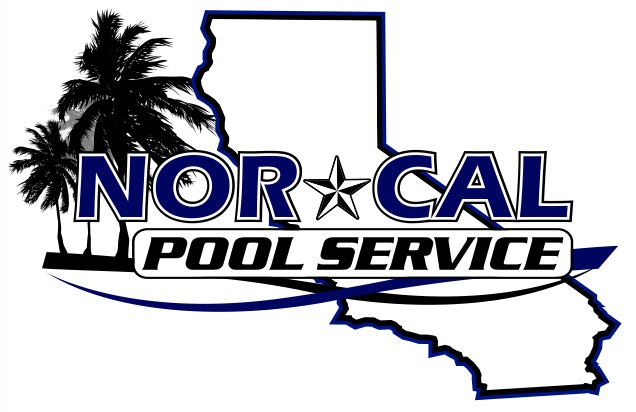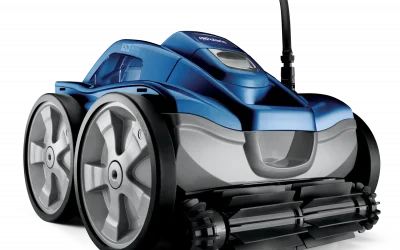A swimming pool is more than just a refreshing oasis; it’s a significant investment that requires regular maintenance to ensure safe enjoyment for families.
At NorCal Pool Service, we understand the importance of identifying potential issues before they escalate into major problems that require costly professional intervention.
Recognizing the early warning signs of pool issues can save homeowners thousands of dollars in extensive repairs and prevent potential safety hazards.
Our expert technicians are available to provide diagnostics and service solutions for all types of pool issues. Call us at 925-549-6801 or email us at servicerequest@norcalpool.com for assistance.
Understanding the Importance of Pool Maintenance
Regular pool maintenance is crucial for preventing costly repairs and ensuring the pool remains a safe and enjoyable space. Maintaining the correct water balance is essential, as failure to do so can lead to health and safety issues for swimmers and damage to the pool.
How Regular Maintenance Prevents Costly Repairs
Consistent maintenance is key to preventing expensive repairs. By regularly testing water chemistry and inspecting mechanical components, pool owners can identify and address issues early. This proactive approach helps maintain proper water chemistry, protecting both swimmers’ health and the pool’s structural components.
The Impact of Neglect on Your Pool’s Lifespan
Neglecting routine maintenance can have severe consequences, including accelerated deterioration of pool equipment and surfaces. Over time, minor issues can evolve into major structural problems, compromising the entire pool system. Establishing a consistent maintenance schedule is the most cost-effective approach to pool ownership.
Water Quality Issues: The First Red Flag
Water quality issues are often the first indication that something is amiss with your pool. Maintaining optimal water quality is crucial for a safe and enjoyable swimming experience. We need to be vigilant about changes in our pool water’s appearance, clarity, and chemistry.
Cloudy or Discolored Water
Cloudy or discolored water is a common issue that can arise from various factors, including excessive chlorine, mineral buildup, or the presence of bacteria and algae. When pool water becomes stagnant, it can lead to cloudiness. Adjusting the chemical balance and ensuring proper filtration can often resolve this issue.
Persistent Algae Growth Despite Treatment
Algae growth is another significant concern, often indicated by green, yellow, or brown discoloration of the water. If algae recur despite treatment, it may signal inadequate circulation, filtration problems, or biofilm in the plumbing lines. We must address these underlying issues to prevent damage to the pool surfaces and equipment.
Chemical Imbalance and pH Problems
Chemical imbalances, particularly pH problems, can cause eye and skin irritation while damaging pool equipment and surfaces. Maintaining a pH between 7.2-7.6, along with appropriate total alkalinity and calcium hardness levels, is essential for optimal water chemistry. We should regularly test our pool water to identify and correct any imbalances.
- Cloudy water may indicate filtration issues or chemical imbalances.
- Algae growth can damage pool surfaces and equipment if left untreated.
- pH imbalances can cause health issues and equipment damage.
Structural Warning Signs Your Pool Needs Repair
Identifying the warning signs that indicate your pool needs repair is essential for preventing further damage. Structural issues can lead to significant problems, including water loss and further damage to the pool structure.
Cracks in Pool Walls or Floor
Cracks in your swimming pool’s walls or floor are a significant concern. These cracks can be structural or surface-level. We recommend monitoring cracks larger than 1/8 inch or those that change in size, as they may indicate structural movement.
- Cracks can lead to leaks and further damage.
- Structural cracks require professional evaluation.
Damaged Tile or Grout
Damaged tile or deteriorating grout lines can create entry points for water to penetrate behind the pool shell, causing further structural damage. Regular inspection can help identify these issues early.
Deteriorating Pool Deck
A deteriorating pool deck can direct water toward the pool foundation, undermining the pool structure. Signs include significant cracking, settling, or heaving. We advise addressing these issues promptly to prevent further damage.
Filtration and Circulation System Problems
Maintaining a healthy swimming environment relies heavily on the proper functioning of your pool’s filtration and circulation system. This system is responsible for removing debris and contaminants from the water, ensuring it remains clean and safe for use.
Malfunctioning Pool Pump
A malfunctioning pool pump can lead to a range of issues, including reduced water flow, increased energy consumption, and even complete system failure. Signs of a failing pump include unusual noises, failure to prime, or inconsistent operation. If you notice any of these symptoms, it’s essential to address the issue promptly to prevent further damage to your pool’s filtration system.
Clogged or Damaged Filters
Filters play a critical role in removing impurities from your pool water. Clogged or damaged filters can lead to poor water quality, increased pressure on the filtration system, and potentially cause damage to other equipment. Regular maintenance, including cleaning or replacing filters as needed, is crucial to maintaining optimal system performance.
Poor Water Circulation
Poor water circulation can result in “dead zones” within your pool where contaminants and algae can accumulate. This issue can stem from various factors, including pump problems, clogged filters, or blocked plumbing lines. Ensuring proper water circulation is vital for maintaining clean, safe, and healthy swimming conditions.
Leaks and Water Loss Issues
Leaks and water loss issues are critical problems that can lead to significant damage if not addressed promptly. A leaking pool can result in wasted water, increased chemical consumption, and potentially catastrophic structural damage.
How to Identify a Pool Leak
Identifying a pool leak involves a simple yet effective method known as the “bucket test.” To perform this test, fill a bucket with pool water to the same level as the pool, mark the water level on both the bucket and the pool, and then compare the levels after 24 hours. If the pool water level has dropped significantly more than the bucket’s, it may indicate a leak. Water loss exceeding 1/4 inch per day beyond normal evaporation is a red flag that warrants further investigation.
Other signs of a leak include consistently wet areas around the pool, especially when the equipment is turned off, which could indicate underground plumbing leaks.
Common Locations for Pool Leaks
Pool leaks can occur in various locations depending on the pool type. Common areas include skimmer attachments to the pool wall, light fixtures, return jet fittings, and the main drain. For vinyl liner pools, leaks often occur at seams, corners, steps, and around fittings. Concrete pools typically leak at structural cracks or through deteriorated plaster, while fiberglass pools may develop leaks where plumbing connects to the shell or at stress cracks.
Modern leak detection methods such as pressure testing, dye testing, and electronic leak detection can accurately pinpoint leaks without extensive excavation, making it easier to address the issue promptly and minimize damage.
Electrical and Heating System Warning Signs
Ignoring electrical and heating system warning signs can lead to serious safety hazards and costly repairs. It’s essential to be aware of the signs that indicate a problem with your pool’s electrical and heating systems.
Malfunctioning Pool Heater
A malfunctioning pool heater can be a significant issue, especially during the colder months. Various problems can lead to this, including a faulty power source, incorrect temperature settings, a damaged filter, a broken pool pump, or damaged pool valves.
Broken or Flickering Pool Lights
Broken or flickering pool lights are not just an inconvenience; they can also be a safety hazard, especially if you have water features like waterfalls or fountains. This issue may indicate water intrusion into electrical components.

Control Panel Issues
Control panel issues, such as unresponsive buttons or error messages, can indicate electronic problems that affect all pool systems. It’s crucial to address these issues promptly to prevent further damage.
Regular maintenance and prompt repairs are key to ensuring the longevity and safety of your pool’s electrical and heating systems. If you notice any of these warning signs, it’s essential to consult a professional to diagnose and fix the issue.
Surface Damage and Staining
Pool surface damage and staining are warning signs that should not be ignored. The surface of your pool is not just about aesthetics; it’s also an indicator of the overall health of your pool. Damage or staining can signal underlying issues that need to be addressed.
Types of Pool Surface Stains
Different types of stains on your pool surface can indicate various problems. For instance, light stains often signify calcium deposits, while darker stains may point to rust or metal presence. Green or brown stains typically indicate metals like copper or iron, whereas black spots usually signify manganese or algae growth.
Rough or Peeling Pool Surfaces
A rough pool surface can be more than just a nuisance; it can cause discomfort and even injuries. Rough surfaces that snag swimwear or cause skin abrasions are indicative of surface deterioration. This issue worsens over time if not addressed, potentially leading to more severe problems.
Liner Damage in Vinyl Pools
For vinyl pools, liner damage is a significant concern. Signs like fading, brittleness, or wrinkling indicate that the liner has reached the end of its useful life, typically after 7-10 years. Replacing the liner is essential to maintain the integrity and appearance of your pool.
When to Call NorCal Pool Service for Professional Help
As a pool owner, understanding when to seek professional help is vital. Ignoring the warning signs of pool damage can lead to costly repairs and even safety hazards. If you’re experiencing multiple issues simultaneously, it’s likely a sign of a systemic problem that requires comprehensive solutions.
NorCal Pool Service is here to help. Our experienced technicians specialize in diagnosing and repairing all types of pool issues. We offer free consultations to evaluate your pool’s condition and recommend tailored repair strategies. By investing in our professional service, you can prevent many common pool problems and ensure your backyard oasis remains safe and enjoyable for years to come.
Don’t hesitate to call us at 925-549-6801 or email us at servicerequest@norcalpool.com for immediate assistance. Our team is dedicated to providing you with the best service possible, ensuring your pool remains a source of joy, not stress.


